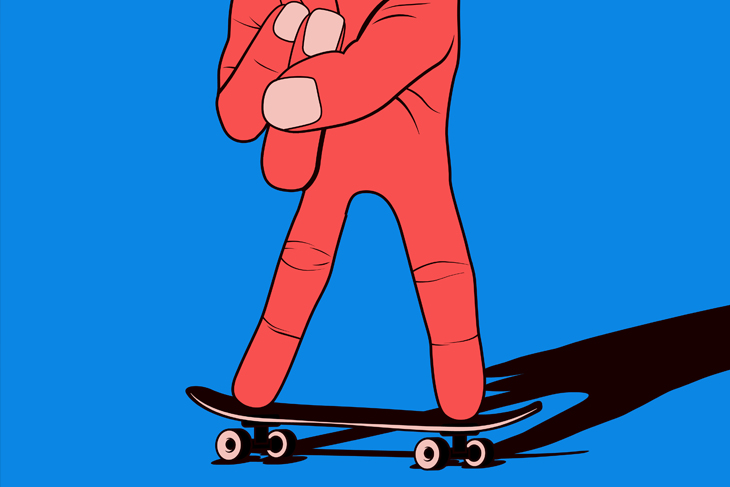
How to get Better at Fingerboarding
In this article, we’ll take a look at practice techniques to help you improve your skills and practice getting better at fingerboarding. But before we go forward, know that it all starts with a quality fingerboard. You need to have one that is proportional to your hand size. You want to test it out, if you can. Put your index and middle finger on the front and back lip and press down to get the feel for it. You’ll want to roll it back and forth to test the wheels, and to the sides to test the handling of the trucks and wheels. If it feels comfortable to you, go for it and buy that board.
Practice, Practice, Practice
Good practice technique starts with form. You’ll want to practice putting your fingers in the correct position every time, which is having your index finger in the middle of the board, and your middle finger on the back lip of the board. Remember that your index finger will control the balance and stability, while the middle finger will be used to perform tricks. All that really matters is that your fingers are comfortable. Play around with the two fingers, alternating them between the middle and the back lip to see which position you feel the most comfortable in, and stick with that one.
Basic Movements to get Better at Fingerboarding
#1-Press down-Twist
The first basic movement is the turn, which you can do easily by pressing down on the back lip of the board and moving the board in the direction you want it to go. This can be done by twisting your fingers left and right, the first core motion and the most basic move that will be the cornerstone of all other moves. Keep practicing this slowly until you can turn at faster speeds before attempting any other tricks.
#2-Manual: Lift-Coast Forward-Twist
Another easy core move that you should practice over and over is the manual, which is when you lift the front end of the board and coast forward. Essentially, this is the turn without twisting your fingers. Press down on the back lip and continue to move the board forward, and you’ve performed a manual. Very simple, but extremely important move to practice over and over, and at different speeds.
#3-Launch into the air
We’ve covered some pretty simple tricks, but that’s not all the core ones that every fingerboarder should know. The most entertaining and high scoring moves all involve getting up in the air. We’ll start with the ollie, the simple act of launching the board into the are by applying pressure on the back lip. Here’s how to do it! Start with your middle finger and index finger on the board in starting position as if you were just going to move back and forth, and then press your middle finger down to lift the front wheels up. You’ll want to press down hard though, that way your board will go up into the air and be stabilized by your index finger, which should still be on the board. Let gravity do the rest!
The ollie is easy to practice once you’re moving at a moderate speed, but you should definitely practice while keeping the board still to start.
#4-Kickflip
To add one additional layer to this and perform a kickflip, perform the same steps to do an ollie and then all you have to do is slide your index finger off of the board while it is in the air. This will destabilize the board and cause it to rotate once, and then land back on the ground. You’ll need to have your fingers ready to place back on the board as soon as it begins to come down to land.
A more complicated more, the heelflip can be accomplished with one minor adjustment to the ollie. Start with your fingers in place as if you were going to perform an ollie, then perform the ollie, and while the board is in the air, you’ll need to curl your index finger slightly, which will cause the board to board to rotate sideways away from you. It should only rotate once before you catch it and land it with your two fingers as the board comes down.
It is very hard to understand the tricks simply by reading about them, so I encourage you to go on YouTube and watch videos in slow motion of these tricks, in order to fully comprehend the finger movements involved.

